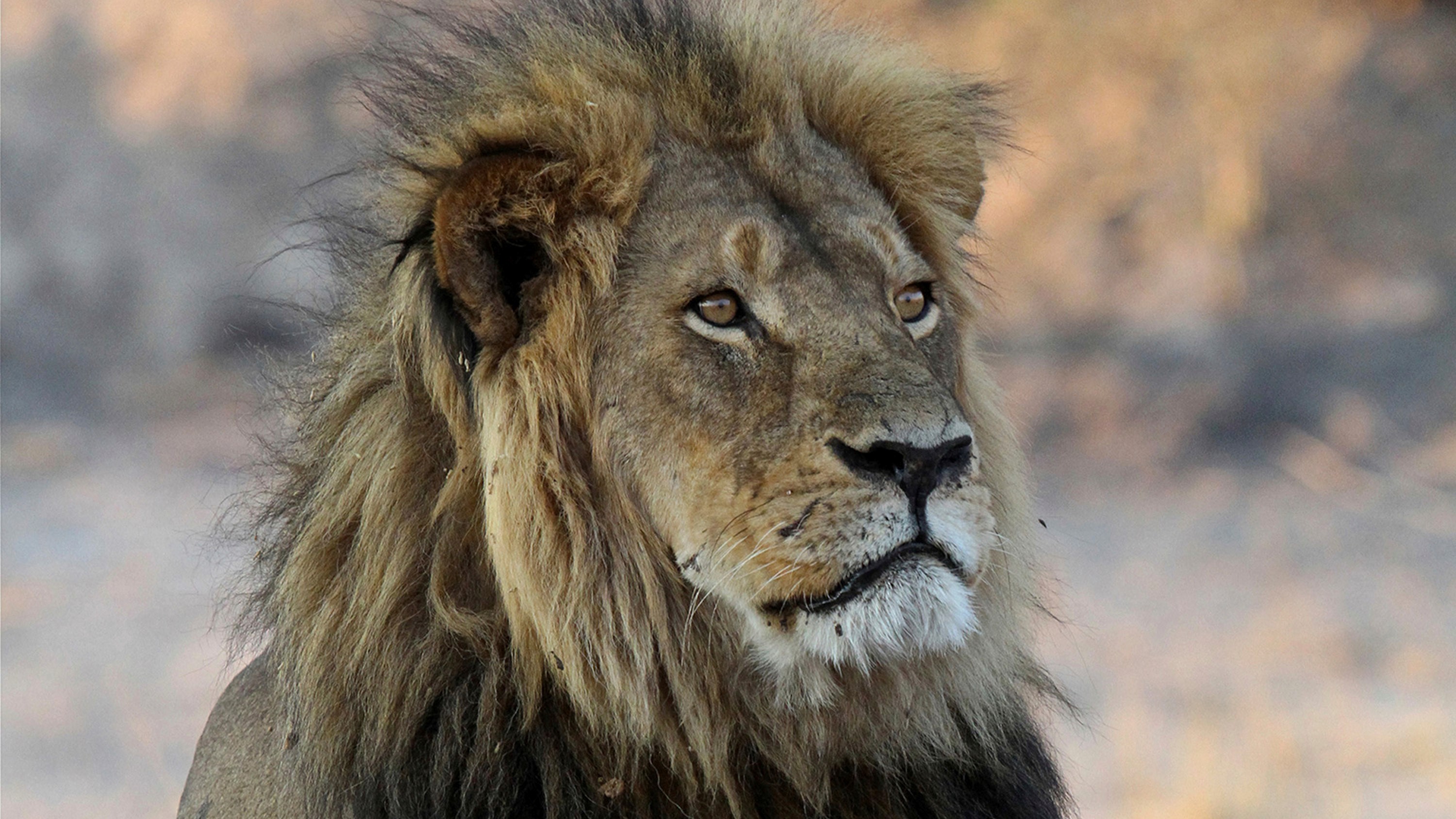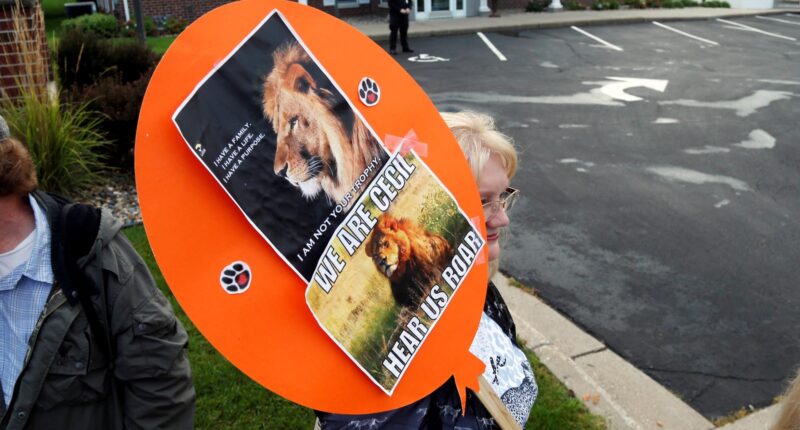Share this @internewscast.com
HARARE, Zimbabwe — Wildlife advocates are condemning the recent demise of a research-collared lion in Zimbabwe at the hands of a trophy hunter, drawing parallels to the notorious incident involving Cecil the lion, whose death by an American hunter in Zimbabwe a decade ago sparked worldwide indignation.

Cecil the Lion rests near Kennedy One Water Point in Hwange National Park, Zimbabwe, Nov. 20, 2013.
AP Photo/Sean Herbert, File
Referred to as Blondie, this lion was monitored as part of an Oxford University research program and wore a collar funded by the safari company Africa Geographic. The organization stated that Blondie met his fate in June, lured out of Zimbabwe’s prominent Hwange National Park into a neighboring hunting area using bait.
With Blondie’s death fueling new arguments against hunting, a representative from Zimbabwe’s National Parks confirmed to The Associated Press on Thursday that the hunt was legally sanctioned, with the hunter possessing the required permits. Zimbabwe permits the hunting of up to 100 lions annually, with these hunts primarily conducted by international tourists willing to pay substantial sums to claim a lion’s head or skin as a trophy.
Simon Espley, CEO of Africa Geographic, criticized the killing of Blondie, stating it undermines the ethical standards that trophy hunters assert, especially since Blondie was a prime breeding male with a visible research collar. According to hunters, their targets are supposed to be older, non-breeding lions.
“The fact that Blondie’s noticeable collar did not deter him from being offered to a hunting client highlights the harsh truth that no lion is immune from trophy hunting,” Espley remarked.
The issue of lion hunting remains controversial, even among conservationists. Some argue that, if properly managed, it can generate funds that are reinvested into conservation efforts, while others advocate for a complete prohibition of killing wildlife for recreation.
Some countries in Africa like Kenya have commercial hunting bans, others like Zimbabwe and South Africa allow it. Botswana lifted a ban on hunting six years ago.
Tinashe Farawo, the spokesperson for the Zimbabwe parks agency, said money from hunting is crucial to support the southern African nation’s underfunded conservation efforts. He defended the hunt and said they often happen at night, meaning the collar on Blondie may not have been visible.
He said he had no information on Blondie being lured out of the park with bait – which is usually a dead animal – but there “is nothing unethical or illegal about that for anyone who knows how lions are hunted. This is how people hunt.”
“Our rangers were present. All paperwork was in order. Collars are for research purposes, but they don’t make the animal immune to hunting,” Farawo said. He declined to name the hunter.
Cecil’s killing in 2015 unleashed furious anger against Walter Palmer, a Minnesota dentist and trophy hunter who lured the lion out of the same national park in Zimbabwe and shot him with a bow before tracking him for hours and finally killing him. Cecil, whose head and skin were cut off and taken for trophies, was also involved in a research project by Oxford University.
Zimbabwe authorities initially said they would seek to extradite Palmer over the hunt, although that didn’t happen, while a hunting guide who helped him was arrested, only for charges to be dropped.
Zimbabwe’s national parks agency says the country makes about $20 million a year from trophy hunting, with a single hunter spending an average of $100,000 per hunt – which includes accommodation and hiring vehicles and local trackers.
Zimbabwe is home to approximately 1,500 wild lions, with around one-third of them living in the vast Hwange National Park. Across Africa, the wild lion population is estimated at around 20,000. However, their numbers are decreasing due to habitat loss and human conflict. Lions, one of Africa’s most iconic species, are currently listed as vulnerable by the International Union for Conservation of Nature.
Copyright © 2025 by The Associated Press. All Rights Reserved.
















